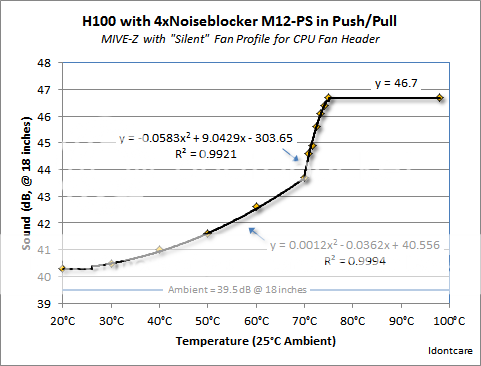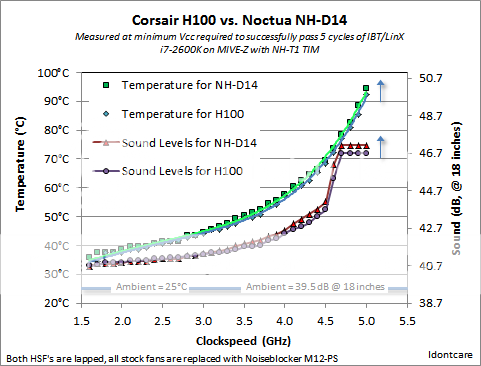So the main reason for this craze for low CPU temps is to reduce power consumption?
I ask because I kind of did not get it why it was so cool to have 40 load temp vs 60. CPU won't break either way.
You're CPU won't break even if you run it at TJmax.
That is why TJmax is the value it is and not some value lower than what it is. If your CPU could break at TJmax then Intel would have spec'ed it to have a lower TJmax.
But...that also tells you what will happen to your CPU if you run it above TJmax. TJmax for my 3770k is NOT 110°C for a reason, bad things happen too quickly at that temperature, but the bad things do not happen too fast at 105°C, so Intel set TJmax at 105°C.
For sandy bridge, the bad things happen too quickly at 105°C, hence TJmax for my 2600k is merely 98°C.
Keeping your operating temps below TJmax is not necessary unless you wish to have your CPU have an expected operating lifetime that spans more than 10yrs.
That said, why do we care about temperatures?
3 reasons - power consumption, operating voltage, and noise.
The minimum voltage necessary to for your CPU to function stably is dependent on operating temperature and clockspeed. If your CPU's temperature increases then you must either increase your Vcc or reduce your maximum clockspeed (if overclocking or undervolting).
Temperature and power consumption also tie in directly to the noise levels of your cooling solution if you have dynamic/responsive cooling enabled (as is done with video cards).
My ASUS mobo enables this, it is pretty cool, I disable it for my tests but I leave it enabled when I'm actually using my rig for day-to-day stuff.
(note that the x-axis is different in both graphs)
In the end we have control over the temperature of our CPU by virtue of having control over three things - setting the CPU clockspeed, setting the CPU voltage, and selecting the cooling solution for the CPU.
Managing the temperature can then give us more overclocking headroom, lowering operating noise, lower power-consumption, or some combination of trade-offs in all of the above.







